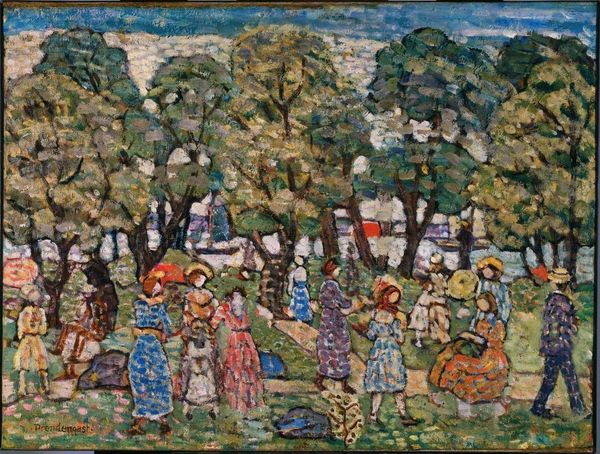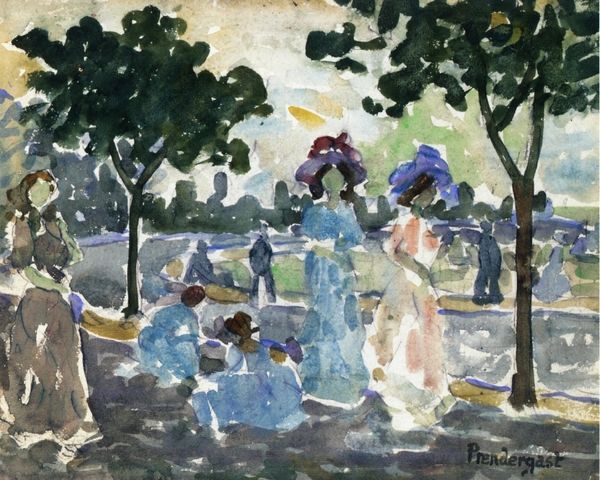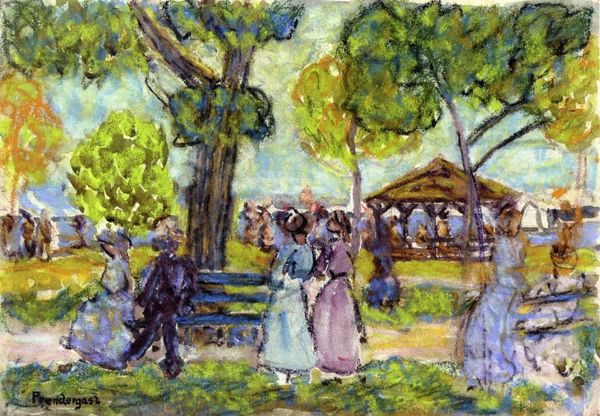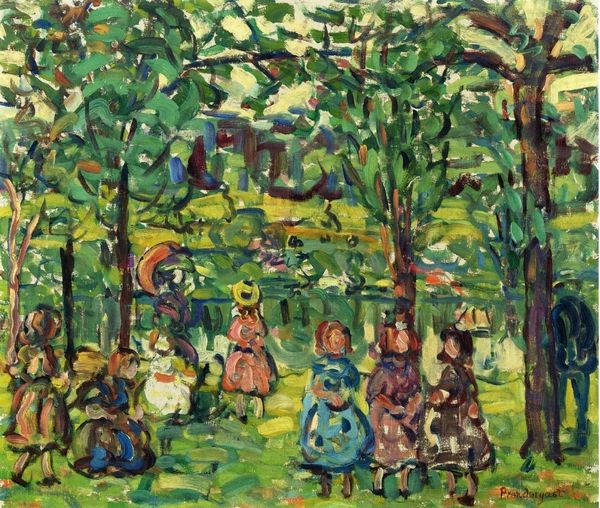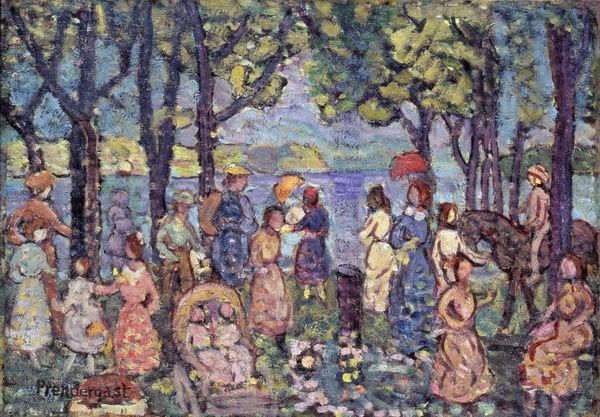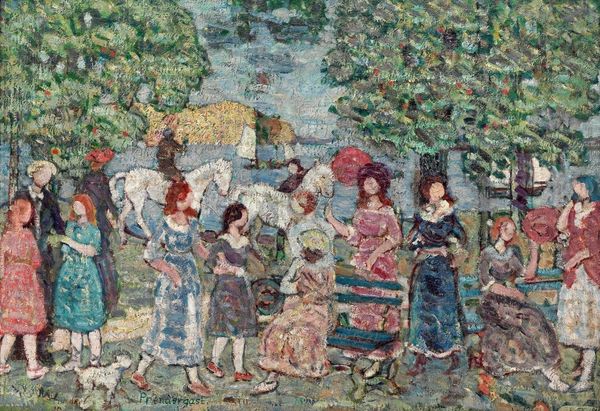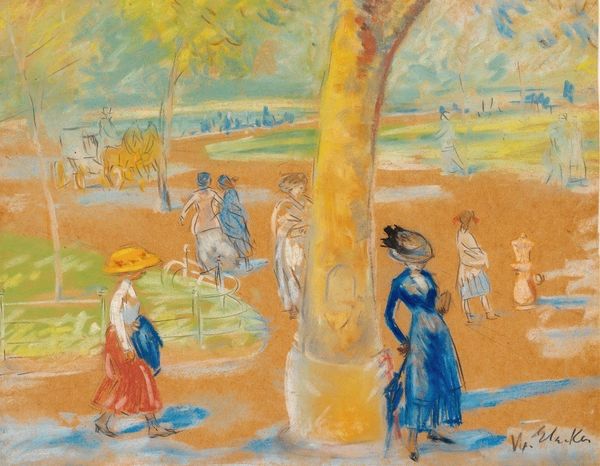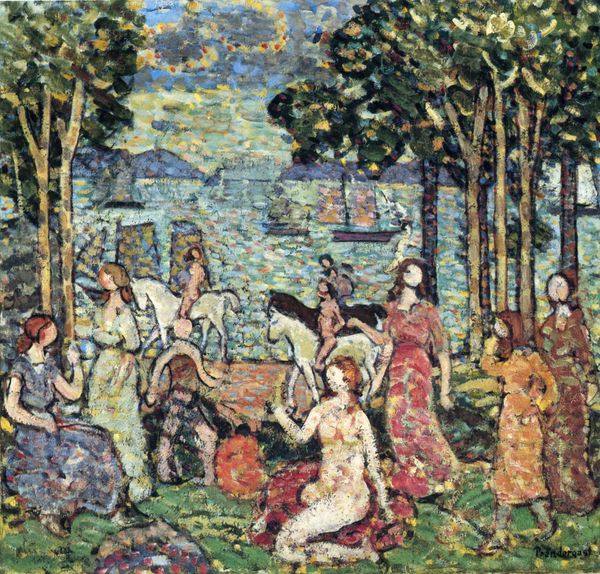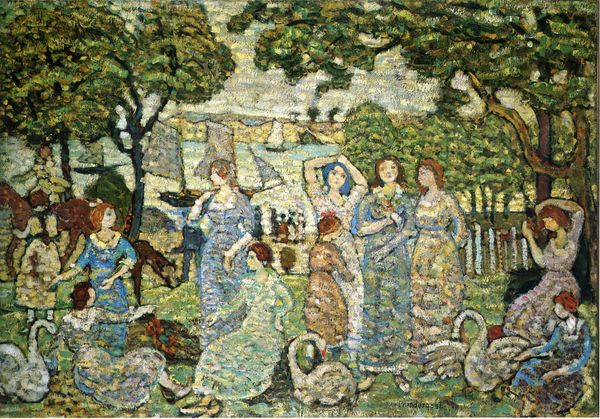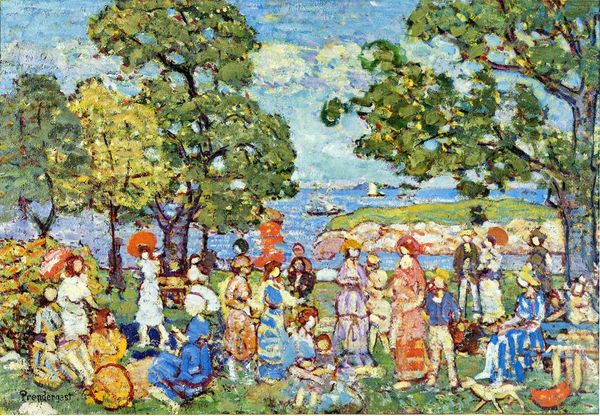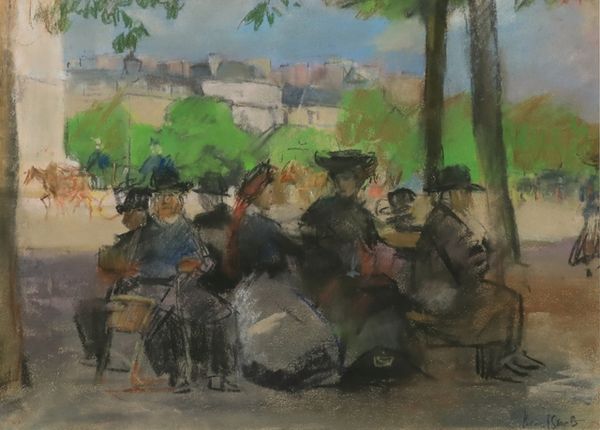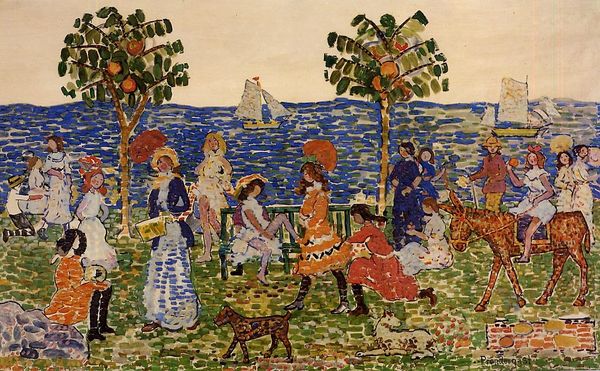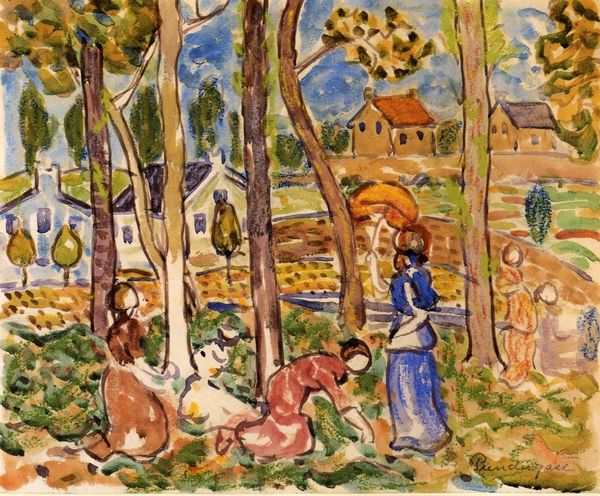
Copyright: Public Domain: Artvee
Editor: We're looking at "Sunday Promenade," a watercolor and pencil painting by Maurice Prendergast, made circa 1915-1920. It has this gentle, dreamy quality, but there is also something detached and remote about these figures in the landscape. How do you interpret this work? Curator: Prendergast’s work often reflects a fascinating tension, doesn’t it? He’s situated within the Post-Impressionist movement, pulling from Impressionism but also reacting to its focus on pure aesthetics, instead engaging with figuration and genre painting to subtly critique class and gender roles during the Arts and Crafts movement. Does that add any nuance to your first impression of the piece? Editor: It does, especially when you consider it within the context of the Arts and Crafts movement. Are you suggesting this work is more than just a pretty scene, maybe even a social commentary on the leisurely classes? Curator: Absolutely! Think about the implied labor behind these leisured activities. Consider who has access to these spaces, and who is conspicuously absent. Ask yourself, what narrative does this tell, and what narrative does it intentionally exclude? It subtly points to a very particular experience. Does knowing about the "Ashcan School" and their stark portrayal of city life give us another contrasting lens to understand it by? Editor: It's interesting to consider it against the backdrop of the Ashcan School, whose work was very engaged with those themes, but in a more overt, realist manner. With its soft hues and seemingly tranquil setting, “Sunday Promenade” presents a far less critical commentary. It makes you think about the subtle ways class and societal divisions manifest in art. Curator: Exactly. This isn't necessarily about overt criticism, but a quiet observation of privilege, power, and who is being represented and how. Considering all the angles and all the absent narratives creates a fuller picture. Editor: This definitely challenges the viewer to consider the unspoken narratives within seemingly pleasant scenes! I now appreciate its quiet, complex, sociopolitical undercurrents.
Comments
No comments
Be the first to comment and join the conversation on the ultimate creative platform.
